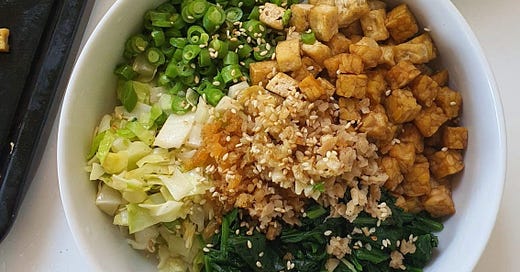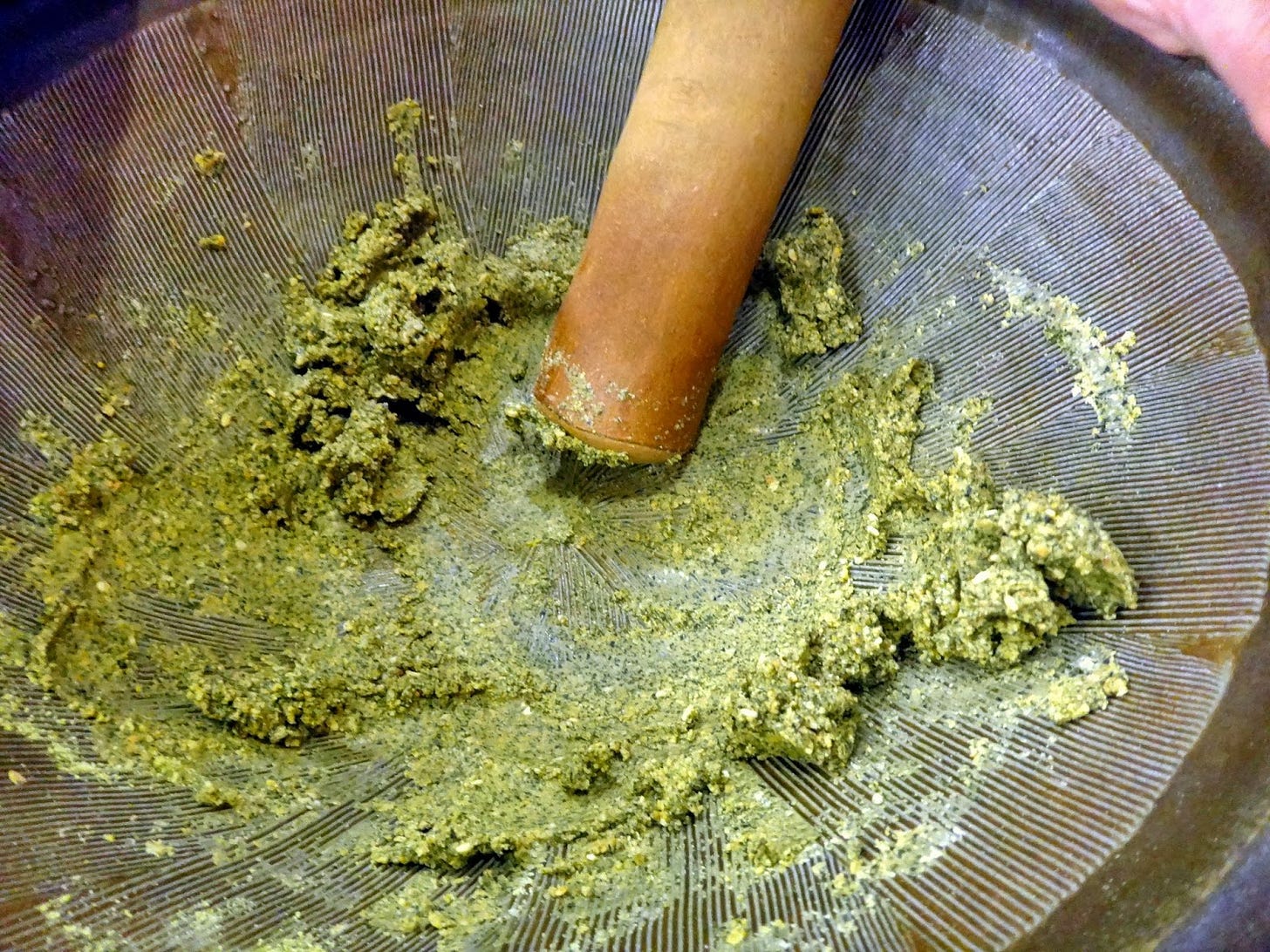Plantasia is launching in Singapore in THREE WEEKS. Lots of high points lately. First of all, the book was featured on Elle Singapore and it was the most thoughtful writeup that chronicled my motivations and approach with the book. There’s also a video at the end of the article of a Plantasia recipe that I’m especially proud of 🧡 The book has also been selling quickly over at Honeybunch of Onion Tops, my Australian stockist - there are only two copies left as I’m writing this. Phoebe has been cooking through the book and documenting it on Youtube and Instagram and I’m in love with the creativity and whimsy of it all.
I’m getting ready to fly to Singapore in approximately a week’s time, and I’m excited and nervous in equal measure. Much of the book writing process happens in isolation and very few have seen the work in its entirety, so I’m really looking forward to hear what readers think and to get to celebrate the work in community. Here are the dates of book events that are happening in Singapore - more details to come, but for now, mark your calendars:
If you’ve not preordered the book, here’s where you can do so:
Worldwide (dispatching from Singapore and the Netherlands): My website
United States: Book Larder, Bold Fork Books
Australia: Honeybunch of Onion Tops
Hong Kong: Bookazine
If you were to ask me to name a dish from Singapore that truly celebrates vegetables, my mind instantly goes to thunder tea rice. This is a traditional dish amongst the Hor Poh clan of the Hakka people, a Chinese community that has been forced to migrate repeatedly to escape war, famine, droughts, and floods.
As a result of their constant landlessness, the Hakkas have become experts at relying on their environment for nourishment, an ability well-expressed by the phrase 就地取材 (literally ‘extracting ingredients from the land you are on’). Author of The Hakka Cookbook, Linda Lau Anusasananan, writes, “Like a dandelion, a Hakka can land anywhere, take root in the poorest soil, and flourish and flower.”
Their connection with the natural world is demonstrated in the origin story of thunder tea. It is said that when a troop of soldiers fell ill during the warring Three Kingdoms period in China and had no access to formal medical care, they sought help from the Hakkas who lived in the vicinity. They gathered medicinal herbs and ground them into a pesto-like paste, which they then dissolved in boiling water to form a curative tea. When the soldiers regained their strength, word of this broth spread and the beverage became a traditional staple.
When the Hakkas migrated to Singapore, many leveraged on their knowledge of the natural environment and took up jobs in agriculture. Not being used to the tropical heat, they began mixing thunder tea into their meals of rice and fried vegetables, in an attempt to boost their immune system and cope with the intense tropical heat. This evolved into what we know today as thunder tea rice. Because of this, the dish is deemed a Southeast Asian creation and is not commonly found in China or Taiwan, where thunder tea is enjoyed more commonly as a standalone beverage.
The broth
Whenever the English name of the dish is mentioned, passionate Hakkas are quick to point out that the word ‘thunder’ is a misnomer. Thunder tea is made by grinding herbs, peanuts, tea leaves, and sesame seeds into a paste in a large, grooved bowl, not unlike a Japanese suribachi. The word to describe this grinding motion 擂 - ‘lei’ in Mandarin or ‘lui’ in Hakka - is homonymous with that for ‘thunder’ 雷, and when the dish’s name was mistranslated to English, it stuck.
Just as pesto has toasted pine nuts to lend it body, thunder tea derives its creaminess from toasted peanuts and sesame seeds. For the peanuts, my preference is to use all-natural peanut butter (none of that processed crap) to save on the effort of toasting and grinding the nuts from scratch. As for the sesame seeds, I gave cookbook author and culinary instructor Yeomin’s method of steaming them first a go! It worked a treat - so fragrant and evenly golden!
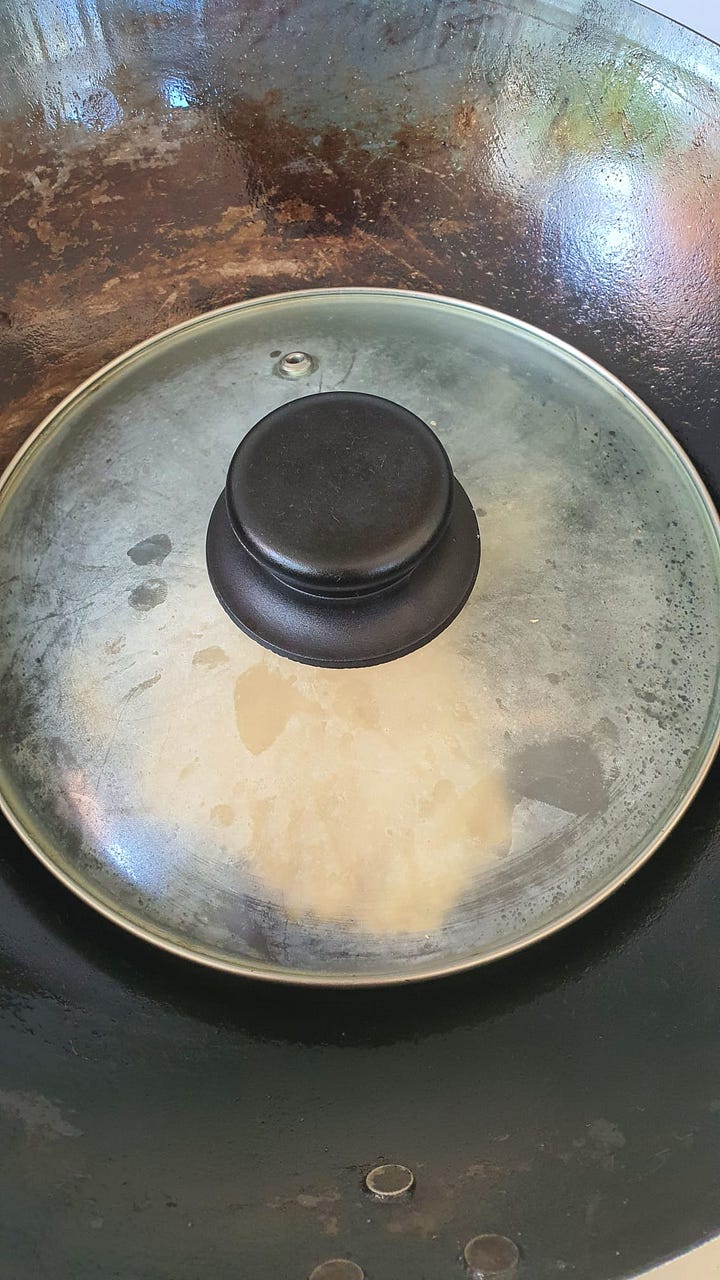

For the herbs, traditional recipes often call for some combination of Thai basil, mint, coriander, culantro, mani chye, and fu lit sum (Acanthopanax Trifoliatus). What I use in my thunder tea are Thai basil, mint, and coriander, which I feel are readily accessible and sufficient in capturing the flavour of thunder tea. (Our Italian basil has been growing wild recently so that made it into the mix too, on this occasion!)

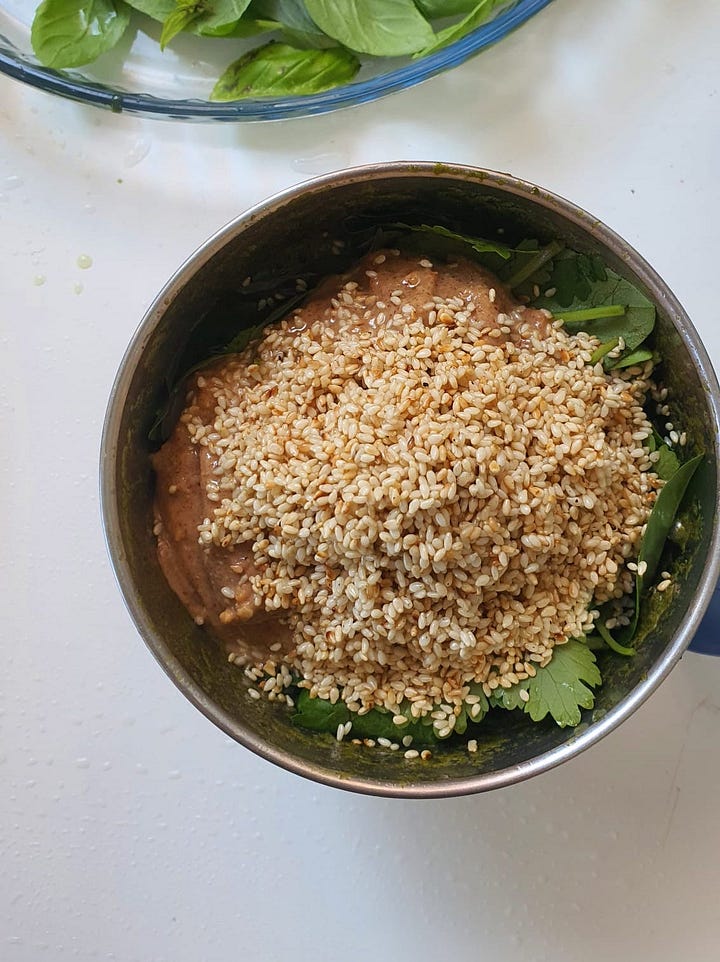
Some recipes call for pre-blanching or pre-frying the herbs before grinding them. I set up a little experiment with two pastes: one made with pre-blanched herbs (bottom in the photos) and another with raw herbs (top in the photos). While the former was more vivid right after grinding (left), it turned a similar dull green with time (right). The colour concerned me at first, but when I added boiling water to make the “tea”, the paste came to life and the resulting broth brought ceremonial matcha to mind.

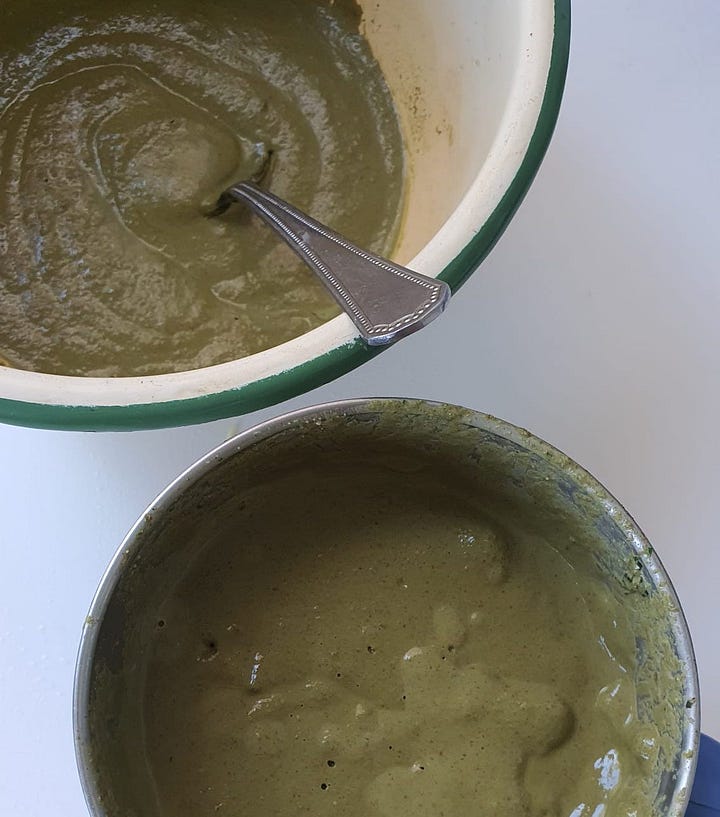
The toppings
Because the Hakka people moved around so much, their cuisine is characterised by the salty and intense flavours of preserved and dried ingredients that could withstand travel. In thunder tea rice, these are present in the form of dried shrimp, preserved radish, and dried anchovies. In this way, the dish is a beautiful example of how animal protein is used in traditional cooking to flavour an entire dish rather than being the star of the show.
As many Hakkas in Singapore worked on farms and had their own backyard gardens, thunder tea rice features a wide range of vegetable toppings. One of the most well-known thunder tea rice hawker stall was Thunder Tree, which obtained their vegetables directly from the family’s very own farm, Fireflies Health Farm. When the farm was still operational, the family was able to provide diners with a truer farm to table experience than many local restaurants could only aspire to.
In his cookbook The Way of Kueh, Christopher Tan writes of kueh something that I believe applies to many traditional dishes that we know and love in Singapore. “Its virtue lies not in leaps of logic, but in the cheer of company. Its traditional techniques - grinding rice, frying fillings, kneading dough - are not meant for solo cooks. They require the arms of a family, the hands of a village.” When Hakka families gather to cook this dish, the element of communal and family bonding stands out. With each family member helping in the preparation, it is not uncommon for the rice to be topped with as many as seven types of vegetables and five condiments.
These days, however, home-cooking has become more of a solo effort. To keep things manageable, I’ve prepared mine with three vegetables - cabbage, baby spinach, and French beans - all in varying shades of green because, to me, that is the defining visual trait of the dish. Tempeh is not a traditional ingredient, but in the spirit of using what’s in your area, I included it as well (owing to the large Indonesian influence in the Netherlands where I live, high-quality tempeh is really affordable). Cubed and deep-fried, it made for such a delicious addition to the bowl!
I’m sure anyone who is doing something in the heritage food space has had to contend with tiresome remarks about “authenticity”, and the idea of “correctness” or “incorrectness”. But I believe that, in the case of thunder tea rice, to harp on the use of specific ingredients, such as mugwort or wing beans, is to completely miss the point as the whole philosophy of Hakka cooking is based upon adapting to your circumstances and using whatever is in season and abundant.
Thunder tea rice is such an exuberant expression of one’s sense of place, and you’ll be surprised at how straightforward and deliciously comforting the dish is once you embrace what’s good in your area 🌿😌
Thunder tea rice
Serves 4 (Pescatarian, but extremely vegan-friendly)

